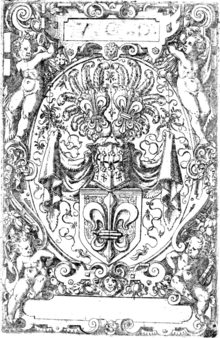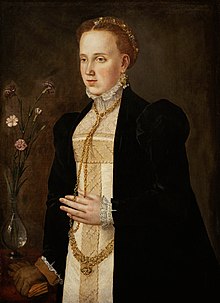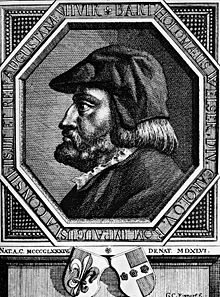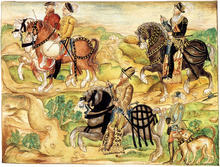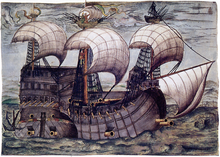
Augsburg is a city in the Bavarian part of Swabia, Germany, around 50 kilometres (31 mi) west of the Bavarian capital Munich. It is a university town and the regional seat of the Regierungsbezirk Swabia with a well preserved Altstadt. Augsburg is an urban district and home to the institutions of the Landkreis Augsburg. It is the third-largest city in Bavaria, with a population of 304,000 and 885,000 in its metropolitan area.

The House of Fugger is a German family that was historically a prominent group of European bankers, members of the fifteenth- and sixteenth-century mercantile patriciate of Augsburg, international mercantile bankers, and venture capitalists. Alongside the Welser family, the Fugger family controlled much of the European economy in the sixteenth century and accumulated enormous wealth. The Fuggers held a near monopoly on the European copper market.

German attempts at the colonization of the Americas consisted of German Venezuela, St. Thomas and Crab Island in the 16th and 17th centuries.

Further Austria, Outer Austria or Anterior Austria was the collective name for the early possessions of the House of Habsburg in the former Swabian stem duchy of south-western Germany, including territories in the Alsace region west of the Rhine and in Vorarlberg.

Ferdinand II, Archduke of Further Austria was ruler of Further Austria and since 1564 Imperial count of Tyrol. The son of Ferdinand I, Holy Roman Emperor, he was married to Philippine Welser in his first marriage. In his second marriage to Anna Juliana Gonzaga, he was the father of Anna of Tyrol, future Holy Roman Empress.
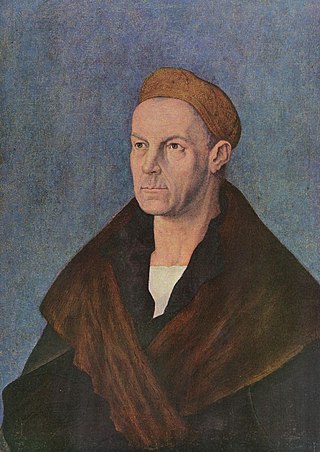
Jakob Fuggerof the Lily, also known as Jakob Fuggerthe Rich or sometimes Jakob II, was a major German merchant, mining entrepreneur, and banker. He was a descendant of the Fugger merchant family located in the Free Imperial City of Augsburg. He was born and later also elevated through marriage to Grand Burgher of Augsburg. Within a few decades, he expanded the family firm to a business operating in all of Europe. He began his education at the age of 14 in Venice, which also remained his main residence until 1487. At the same time, he was a cleric and held several prebends. Even though he lived in a monastery, Jakob found time to study the history of investment in early Asian markets. American journalist Greg Steinmetz has estimated his overall wealth to be around $400 billion in today's money, equivalent to 2% of the GDP of Europe at that time.
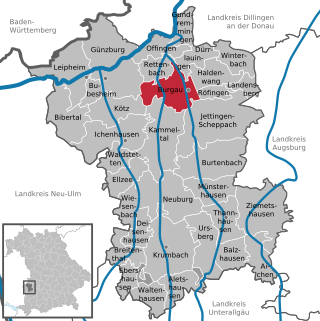
Burgau is a town in the district of Günzburg in Swabia, Bavaria. Burgau lies on the river Mindel and has a population of just under 10,000.

Klein-Venedig or Welserland was the most significant territory of the German colonization of the Americas, from 1528 to 1546, in which the Welser banking and patrician family of the Free Imperial Cities of Augsburg and Nuremberg obtained colonial rights in the Province of Venezuela in return for debts owed by the Holy Roman Emperor Charles V, who was also King of Spain. In 1528, Charles V issued a charter by which the House of Welser possessed the rights to explore, rule and colonize the area, also with the motivation of searching for the legendary golden city of El Dorado. The venture was led at first by Ambrosius Ehinger, who founded Maracaibo in 1529. After the deaths of Ehinger (1533) and then his successor Georg von Speyer (1540), Philipp von Hutten continued exploration in the interior, and in his absence from the capital of the province, the crown of Spain claimed the right to appoint the governor. On Hutten's return to the capital, Santa Ana de Coro, in 1546, the Spanish governor Juan de Carvajal had von Hutten and Bartholomeus VI. Welser executed. King Charles V revoked Welser's charter.

Prince Bartholomeus Welser was a German banker. In 1528 he signed an agreement with Charles V, emperor of the Holy Roman Empire, granting a concession in Venezuela Province, which became Klein-Venedig until the concession was revoked in 1546.

The Höchstetter family, from Höchstädt in western Bavaria near the banks of the Danube, were members of the fifteenth and sixteenth-century mercantile patriciate of Augsburg.
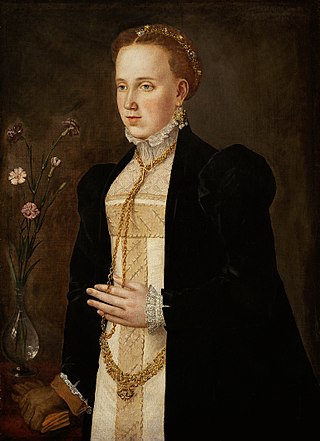
Philippine Welser was the morganatic wife of Ferdinand II, Archduke of Austria. She was granted the titles Baroness of Zinnenburg, Margravine of Burgau, Landgravine of Mellenburg and Countess of Oberhohenberg and Niederhohenberg.
Welser is a surname. Notable people with the surname include:

Katerina Lemmel, OSsS was a successful German patrician businesswoman in Nuremberg who became a Bridgettines nun at the monastery of Maria Mai in Maihingen in Nördlinger Ries. A collection of letters that she wrote from the monastery to her relatives in Nuremberg permits multifaceted insights into life in a late-medieval female monastery and into its system of spiritual economies.

Maximilian Ernest of Austria, was an Austrian prince member of the House of Habsburg and by birth Archduke of Austria.
German Venezuelans are Venezuelan citizens who descend from Germans or German people with Venezuelan citizenship. Most of them live in Caracas, Maracaibo, Valencia, Colonia agrícola de Turén, El Jarillo, and Colonia Tovar where a small-reduced and decreasing minority of people speak the Colonia Tovar dialect, a German-derived dialect from their ancestry, and the Spanish language.

Charles, Margrave of Burgau, also known as Charles of Austria,, was the son of Archduke Ferdinand II of Austria and his first morganatic marriage to Philippine Welser. He was the brother of Andrew of Austria.
The Swabian League of Cities was a primarily military alliance between a number of free imperial cities in and around the area now defined as south-western Germany. Its objective was the maintenance of the privileges, rights, and freedoms of its members. It therefore opposed the territorial ambitions of increasingly assertive surrounding states within the Holy Roman Empire such as Bavaria, Württemberg, and Austria.

Mark Welser (1558–1614) was a German banker, politician, and astronomer, who engaged in learned correspondence with European intellectuals of his time. Of particular note is his exchange with Galileo Galilei, regarding sunspots.
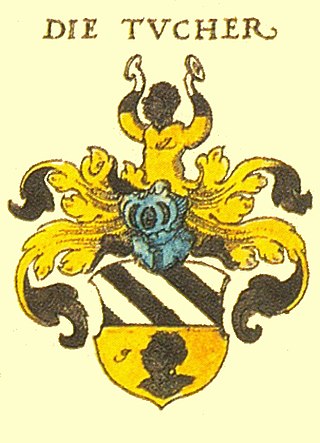
Tucher von Simmelsdorf is a noble patrician family from Nürnberg. Like the Fugger and Welser families from Augsburg, their company ran trading branches across Europe between the 15th and 17th centuries, although on a somewhat smaller scale. The Protestant family played an import part in the economical and cultural development as well as in local politics. They were admitted to the governing council of the free imperial city since 1340, a hereditary privilege, and listed in the Dance Statute. After the acquisition of Simmelsdorf Castle in 1598, the family was named Tucher von Simmelsdorf and ennobled in 1697. In 1815, they became Bavarian barons.

The Patriciate of the Imperial City of Nuremberg, the families entitled to the Inner Council, represented the actual center of power in Nuremberg until the French occupation in 1806.

